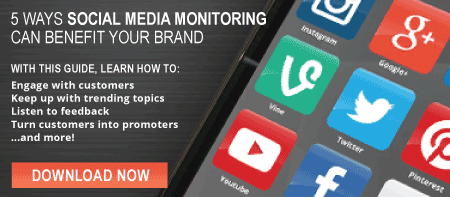
In today’s digital marketing world, it’s hard to imagine what life would be like without social media sites like Facebook and Twitter. Well, there was a time when traditional print ads, billboards, and TV commercials ruled advertising. In order to fully understand the ever changing digital realm, it’s important to understand where it all came from and how it has evolved. Here are the biggest trend changes in the history of social media.
Creating a Profile and Adding Friends
We begin our journey through social media with websites that resemble modern day social media, but didn’t allow users to do much compared to the social media we know and love today.
“Six Degrees” was created in 1997 and can be considered the first social media site. This website allowed users to create a profile and add friends, but that was about it. The model this site used for friending was based off of the “six degrees of separation” theory, ranking friends as first degree, second degree, third degree, and so on.
Blogging and Instant Messaging
Not too long after the “first social media site,” blogging and instant messaging took the Internet by storm in 1999. With sites like “Blogger” and “Live Journal,” users could publish a blog on the site and have friends instantaneously read it. Although blogs aren’t necessarily considered social media, sites like these could be considered the prequel to a “Facebook status.”
Around this same time, instant messaging also became popular. The most recognized of these sites was “AOL Instant Messenger” or AIM. This site allowed users to live-message each other, like texting via computer.
Interactive Community
The next evolution step for social media was the creation of websites with more of an interactive community. With this came Friendster and LinkedIn in 2002, and MySpace in 2003. Friendster allowed users to create a profile, add friends, and add apps that allowed users to interact with their friends.
LinkedIn is a more professional social media site, with profile descriptions geared more toward work experience and the ability to digitally endorse friends for the work they’ve done.
MySpace can be considered the father of Facebook. This is the first social media website that allowed users to have both private messages and public comments posted to a friend’s profile.
Newsfeed and Likes
Up until this point, users viewed their own profiles and their friends’ profiles. All of their blogs, posts, and comments were viewed in one of those two areas. In 2006, the king of social media websites hit the public Internet. Facebook introduced the concept of a newsfeed. This is a common area that shows the up-to-date posts their friends publish, instead of having to go to a friend’s profile to view what they post. Facebook also introduced the ability to “like” a person’s post.
Building off of these two concepts, Twitter was invented in 2006. This website could be called a simplified version of Facebook. With a smaller profile and a character limit on posts, Twitter is meant to be a faster paced social media site. This website also introduced the ability to “retweet” or share others posts so your followers can view what someone else said, even if they don’t follow the person who posted it.
Mobile Picture and Video Apps
Picture and video apps for mobile phones are the latest trends in social media. These apps are created specifically for users’ mobile devices. “Instagram” was created in 2010 and uses a similar format to Twitter and Facebook, but instead of posting text, users can only post pictures or short videos with a small caption.
In 2012, Snapchat was created. This mobile app allows users to only communicate by picture or 10 second video with a small amount of text. Users have the option to send these pictures or videos to individual friends or post them to their “My Story” for all of their friends to see.
Social media has rapidly evolved and will only continue to change. As a marketer, don’t take these websites and apps for granted; use them to your advantage. Stay up-to-date on new social media technologies and hop on the bandwagon as soon as possible. Having a brand presence and a unique identity on these different platforms will help you stay connected with your customers.
Topics: marketing






